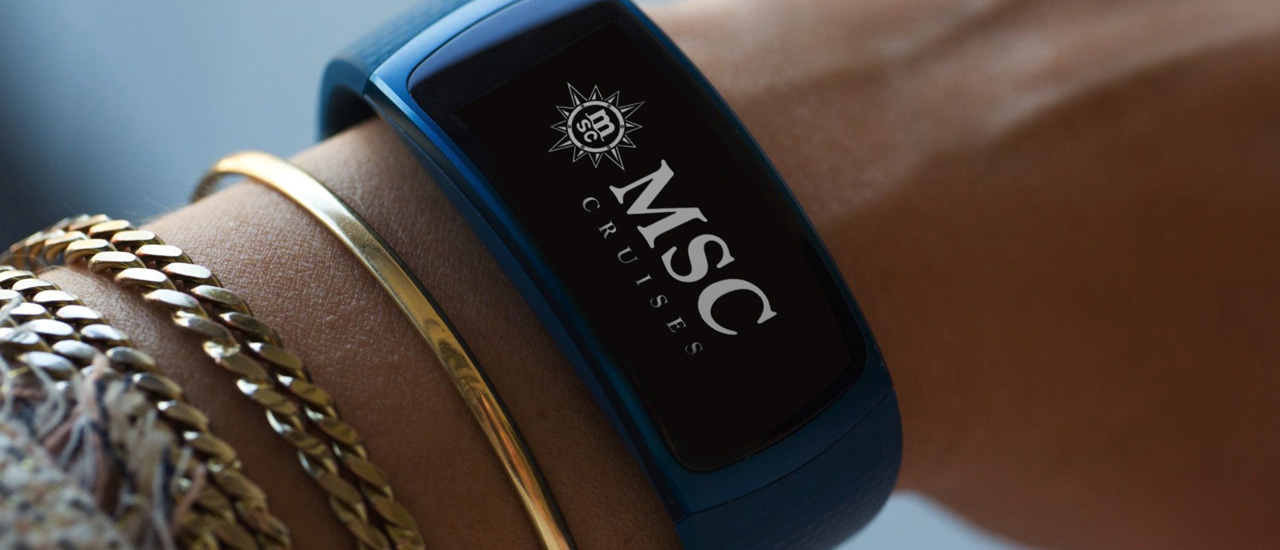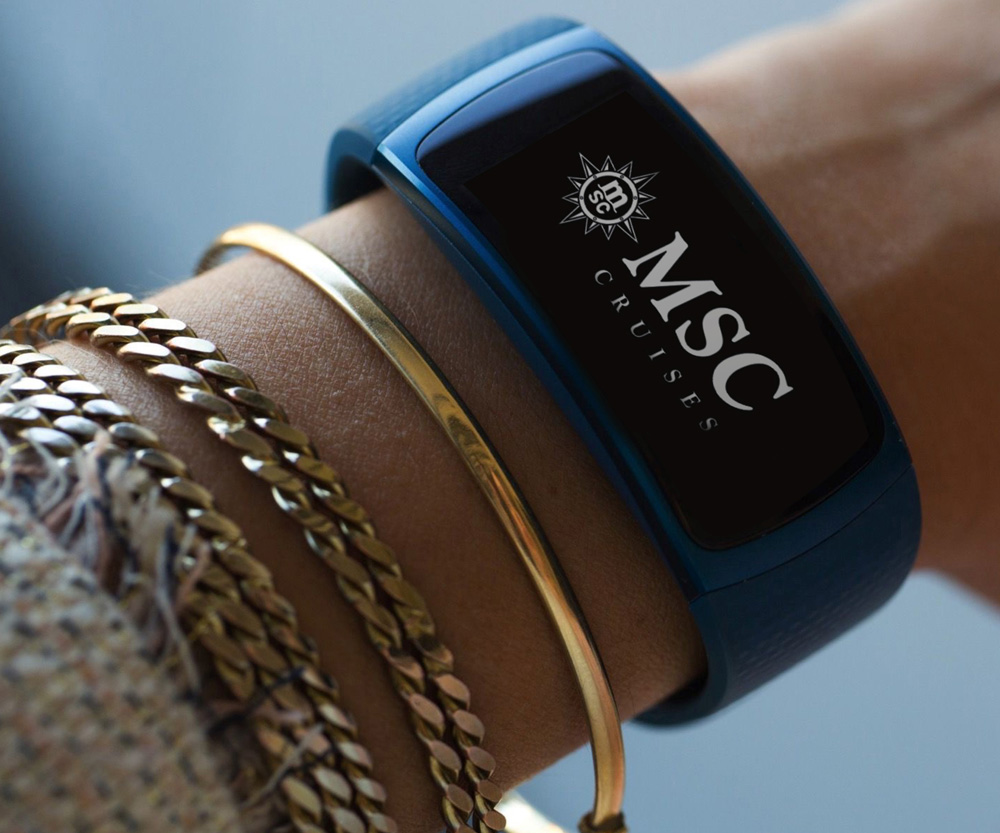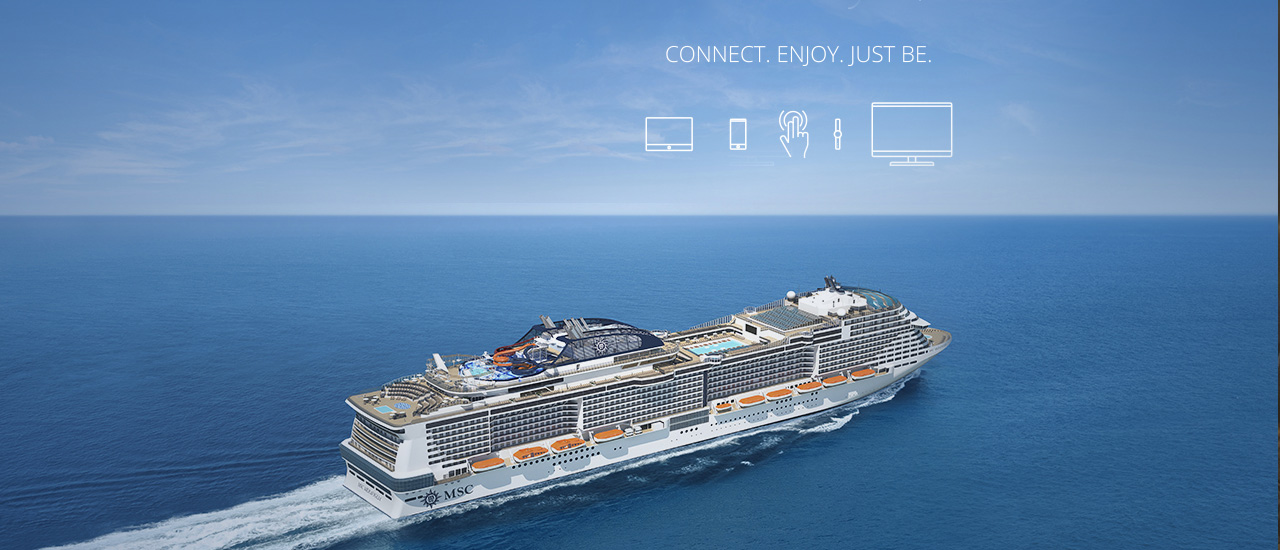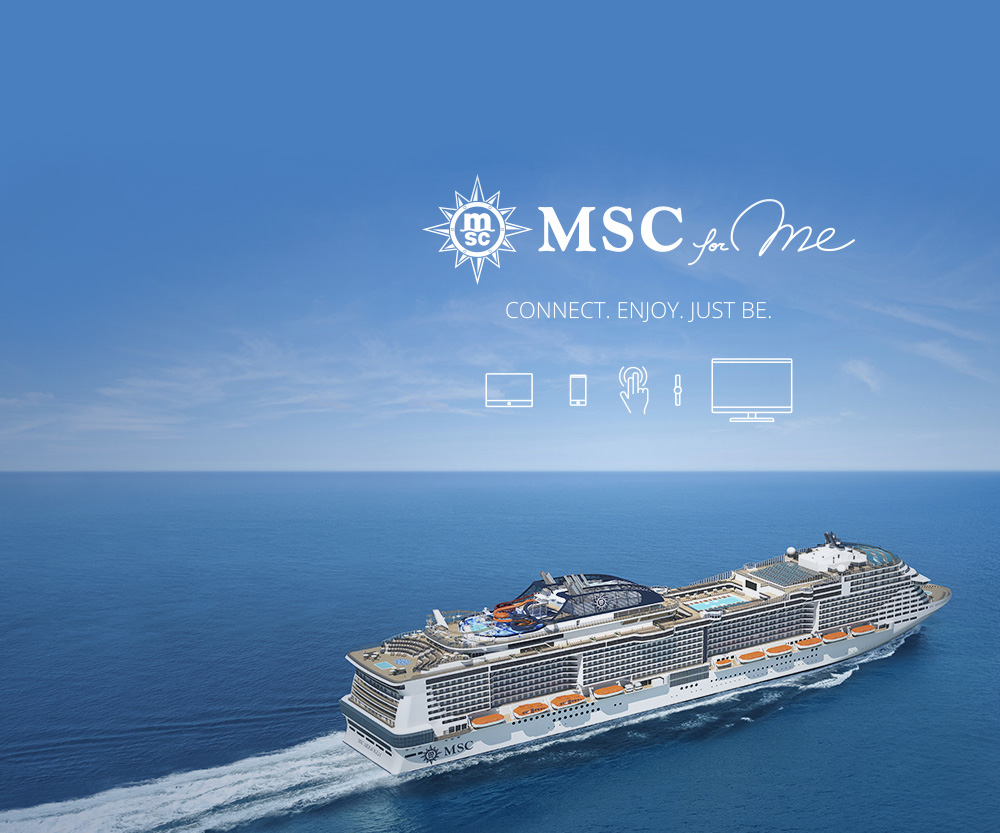MSC Meraviglia: a smart connected city at sea
The MSC Meraviglia is the first of a new fleet of high-tech ships MSC Cruises is launching over the next decade. Frances Marcellin went on board to speak to the team behind the ship’s cutting-edge technology
hen French President Emmanuel Macron smashed a Balthazar Champagne on the MSC Meraviglia’s hull in May 2017, he was inaugurating MSC Cruises’ first new-generation mega-ship – one of 12 that will join the fleet by 2026.
Part of a €10.5bn investment plan, the ship is 315m long, 43m wide and constructed with 35,000 tonnes of steel. With capacity for 5,700 passengers, around 9,000 tonnes of electronics have been implemented so each one can benefit from the MSC Meraviglia’s future-focused state-of-the art-technology.
“On board the Meraviglia there are 16,000 points of connectivity, 700 digital access points, 114 interactive screens, 81 video wall monitors, 2,244 cabins equipped with RFID/NFC technology and 3,050 beacons.”
Having brought leading digital partners on board, including Samsung, Hewlett Packard Enterprise and Deloitte Digital, Luca Pronzati, chief innovation officer for MSC Cruises, has described the new fleet as “smart, connected cities, but with the added complexity of being at sea”.
Providing a “connected” guest experience requires a complex range of hardware and software solutions. On board the Meraviglia there are 16,000 points of connectivity, 700 digital access points, 114 interactive screens, 81 video wall monitors, 2,244 cabins equipped with RFID/NFC technology and 3,050 beacons.
Branded “MSC for Me”, wearable wristbands allow passengers to unlock cabin doors and make payments – from meals to shopping – with a swipe. The app is the most accessible digital channel for guests because it runs on the ship’s intranet network and can be used from wherever they are.
Digital wayfinding with five-metre precision, making reservations, such as for dinner or day trips, and access to important information (including bill details and disembarkation procedure videos) are all accessible to the passenger through the MSC for Me app.
Samsung-designed smart bracelets connect to the MSC for Me system. Image courtesy of MSC Cruises


Samsung-designed smart bracelets connect to the MSC for Me system. Image courtesy of MSC Cruises
Connected cruise technology
The latest report from the Cruise Lines International Association (CLIA), shows that 25.8 million passengers are forecast to take cruises in 2017, and demand for cruising has increased 62% in the ten years between 2005 and 2015. But in a fiercely competitive industry, meeting current and future passenger expectations is crucial.
The CLIA’s number-one cruise industry trend flags how younger generations, known as Millennials and Generation X, “will embrace cruise travel more than ever before” and notes that 48% of non-cruisers are keen to try out a cruise in the future.
"MSC Cruises took a customer-centric approach to its digital vision to make sure all passengers, including Millennials, have their expectations met at sea."
With the majority of Millennials valuing experiences and travel over material goods and 88% agreeing that their smartphone is their packing priority, MSC Cruises took a customer-centric approach to its digital vision to make sure all passengers, including Millennials, have their expectations met at sea.
As a minimum, Millennials expect to have internet connectivity wherever they go. For delivering high-speed networks on board, the MSC Meraviglia uses satellite communication provider Marlink’s services and Intelsat’s high-throughput satellite, as well as 9350 satellite modems from VTiDirect.
Passengers can buy packages to suit their needs, ranging from basic social network access to video streaming, which are priced between €14.90 and €59.90 for seven nights.
The MSC for Me design process
“The overall idea was to create and integrate a digital offering which is enjoyable to customers and used by different touch points: mobile app, tablet, interactive screens and cabin television screens,” says Andrea Franzetti, a digital analyst at Deloitte Digital who has been working on the MSC for Me project from its conception.
MSC Cruises’ business innovation team, led by Pronzati, teamed up with different stakeholders, including behavioural science experts and Deloitte Digital, during the design phase of the app. Deloitte’s development work included the design of services, the processor and the user experience. Samsung was brought on to design the hardware on board, such as the MSC for Me wearable, digital signages, the tablets and the cabin hardware.
“We analysed the entire customer journey and all the touch points so we could see what would lead to anger, what could lead to anxiety, and so on, with the overall aim of reducing the pain for the guest.”
From the very start, MSC Cruises and Deloitte focused on creating what Franzetti describes as a “meaningful vision”.
“The first part of this ‘vision’ for the evolution of the customer’s experience on board was envisaged three years ago when we were in the first stage of the project,” explains Pronzati.
The innovation team, marketing and many other departments of the company were involved, and all staff were asked to write a cruise diary imagining a fresh, modern and ideal experience on a ship. How will you book dinner? How will you be served? What technology will help you? These were the kinds of questions that were asked. Next, a wide range of personas were introduced to test out the preferences.
“We analysed the entire customer journey and all the touch points,” explain Franzetti, “so we could see what would lead to anger, what could lead to anxiety, and so on, with the overall aim of reducing the pain for the guest.”
Following this the team interviewed actual guests on board to further validate the findings. Collecting feedback from passengers took more than eight months and involved between 50 and 100 interviews.
“We did all this qualitative research and then designed the services with the innovation team,” says Franzetti. “The final phase focused on defining the user experience and their interaction with the digital touch points. This involved a collaboration between UX experts, interface designers and creatives.”
An example of how different systems have combined to meet customers’ expectations is through the ability to book and cancel theatre reservations in real time. While it is free to attend theatre performances (with the exception of Cirque du Soleil), the space itself only has capacity for 1,000 guests, which has the potential to cause conflicts on a ship with 5,000+ passengers.
“MSC found a solution to integrate the app with the theatre booking system,” says Franzetti. “The show reservation facility has been a big hit with passengers.”
Digital challenges for passenger engagement
Although the cutting-edge tech on board is widespread and passenger-centric, it can only enhance passengers’ experiences if the passenger engages with the technology.
To help passengers learn about and book shore excursions, the excursions department provides eight booking channels of which four are digital – including an iPad station in front of the excursions reception desk on board where bookings can be made. But not all passengers are embracing the technology with the same vigour.
“One of the insights we’ve uncovered during the rollout is that that there does not seem to be a strong correlation between countries with a high penetration of smartphones and technology adoption and their collective social behaviours in using digital platforms versus in-person interactions,” explains shore excursions director Jean-Pierre Joubert.
“For example, guests from Italy, which has one of the highest penetration rates of smartphone users in Europe, prefer to speak to our staff and get personal recommendations,” he continues. “However, our British guests, who only have a slightly higher smartphone penetration usage rate than Italians, prefer to book on our digital channels.”
One of the ways the innovation team is solving this problem is by providing staff with tablets that allow them to be more mobile. “Even though the addition of handheld tablets has been a recent enhancement, the early data shows that this is by far our most effective booking channel, followed by our desktop kiosks and digital signage,” says Jourbert.

The MSC for Me project aimed to create a ship-wide, integrated digital offering. Image courtesy of MSC Cruises

The MSC for Me project aimed to create a ship-wide, integrated digital offering. Image courtesy of MSC Cruises
Tech to track children on board
One of the most useful innovations for families on board the MSC Meraviglia is a new geo-location service, which is launching soon. Operating in all public areas of the ship, parents will be able to track their children as long as they are wearing a specially designed silicon wristband, which uses Bluetooth Low Energy (BLE) to communicate with 600 active beacon sensors around the ship.
“This is one of the most challenging functionalities and it has a very complicated impact on the ship,” says Pronzati, adding that the active beacons behave differently to passive beacons, which use smartphones to trigger actions. “The geo-location wearable is a different design,” he continues, “whereby you have an active chip set that is engaging with the sensors – it’s completely different technology.”
The steel structure of the ship – along with other materials used on board – has provoked many signal propagation issues. “The water in the swimming pool was causing the signal to jump from one deck to the other, too,” Pronzati explains. “Although overall this has made our life more challenging and more exciting – we’re very proud of the work we’re doing here.”
Future technology developments
There are many other new features in development that are intended to satisfy passenger demands of the future.
Facial recognition cameras will come into operation once compliance with new data protection regulations is completed. The main advantage is that staff will be able to look after guests in a more personalised way.
A digital concierge project, powered by artificial intelligence and machine learning, will allow for more one-to-one communication with guests of the future and make personalised suggestions. Still under discussion, it will likely come into service in 2019.
Virtual reality (VR) will also be used in leisure and retail sectors. For the latter, passengers will be able to try clothes on virtually before buying. But VR will also bring excursion experiences to guests on board.
“We are working on creating unique experiences, such as guests experiencing Rome’s Colosseum,” says Pronzati. “VR is already out there, so we’re really hoping to deliver this on board the MSC Meraviglia in 2018.”